You must be logged in to rate content!
10 minute read
Oil Pressure Equalization line
Compliments of Jim Weise @ www.v8buick.com
2-24-2015
I did some testing here last fall, with a 600HP 470, equipped with my equalization line.
The purpose of the line is to balance the oil pressure front and rear of the engine. It also provides a handy place to hook a good -4 oil pressure gauge feed line.
Here is the line..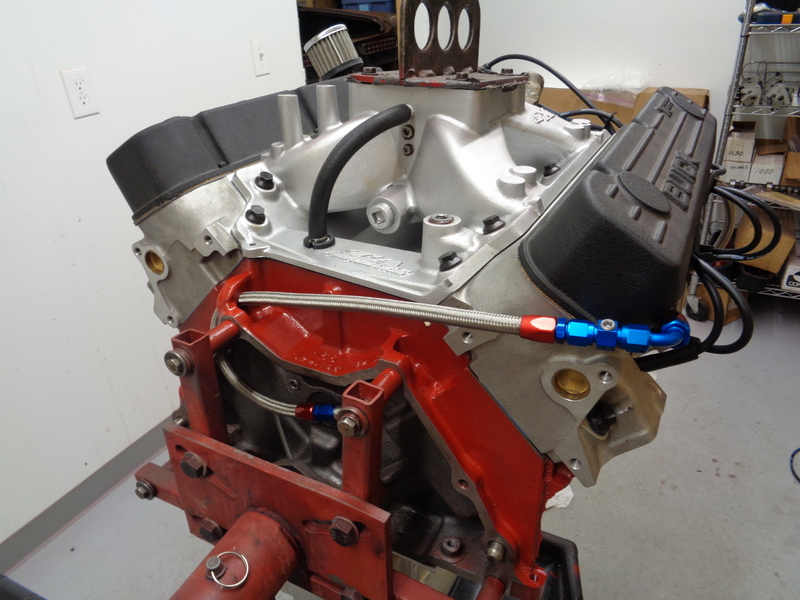
Comes from the oil pressure sender hole on the RF of the block.. this is my STG 1 head routing..
With STG 2 heads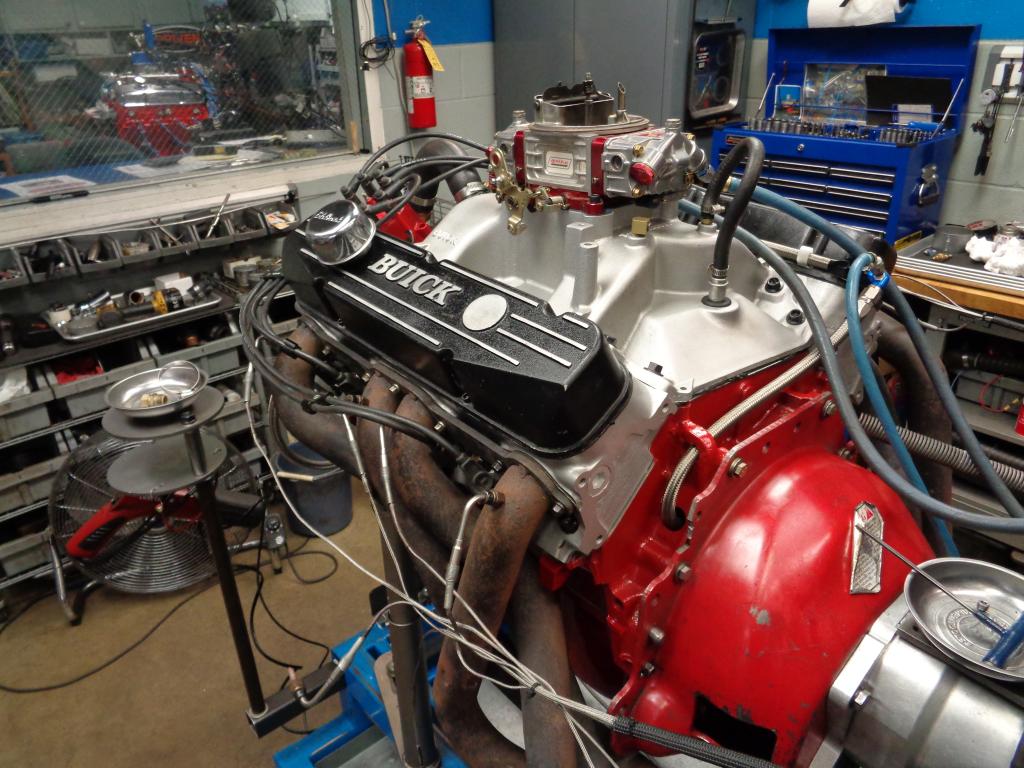
We disconnected the lines at the T and did some testing.. hooked a pressure transducer to each side, and made a pull.
(sorry for the old tech here on the sheet.. my digital copy is not with me right now)
Oil_P on the sheet is rear pressure, LineP is front pressure. Pickup points are the oil sender hole, and the RH rear galley. -6 line size.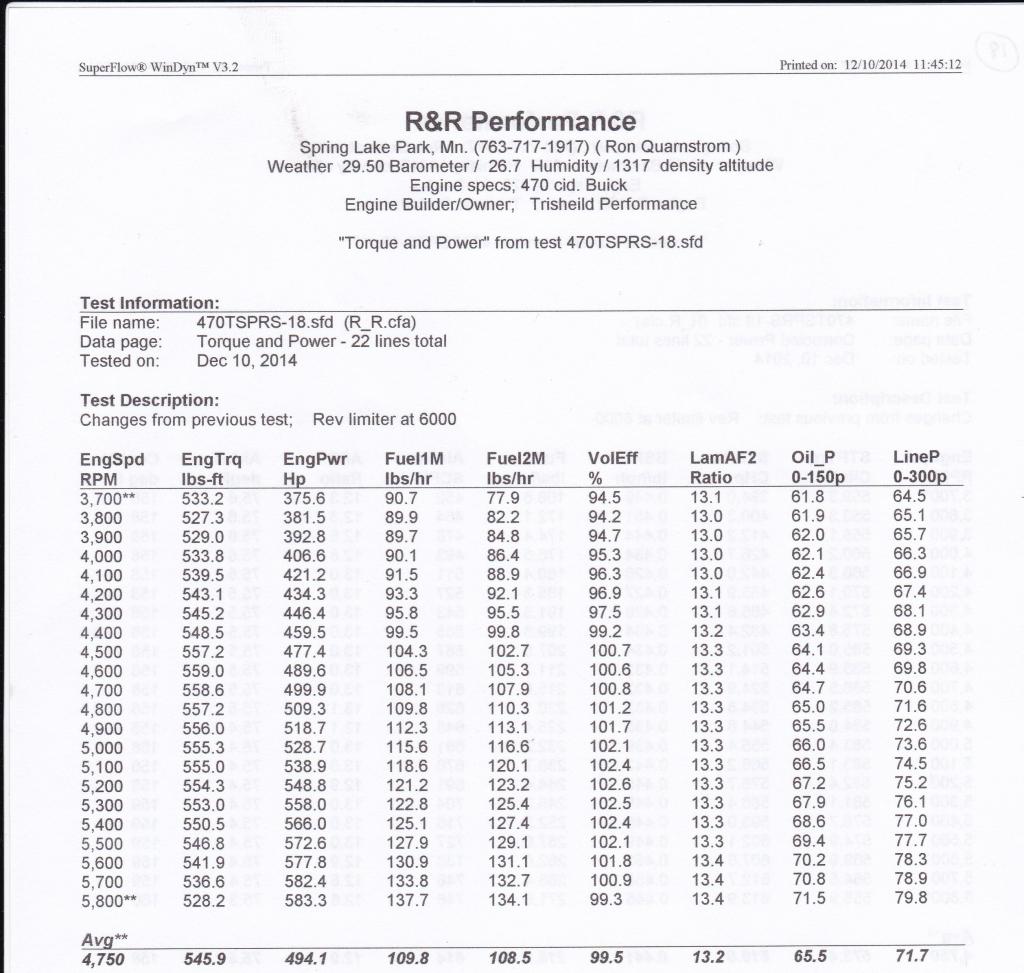
Interestingly enough, when we hooked the two lines together again, no other changes, the pressure actually went to the lower number.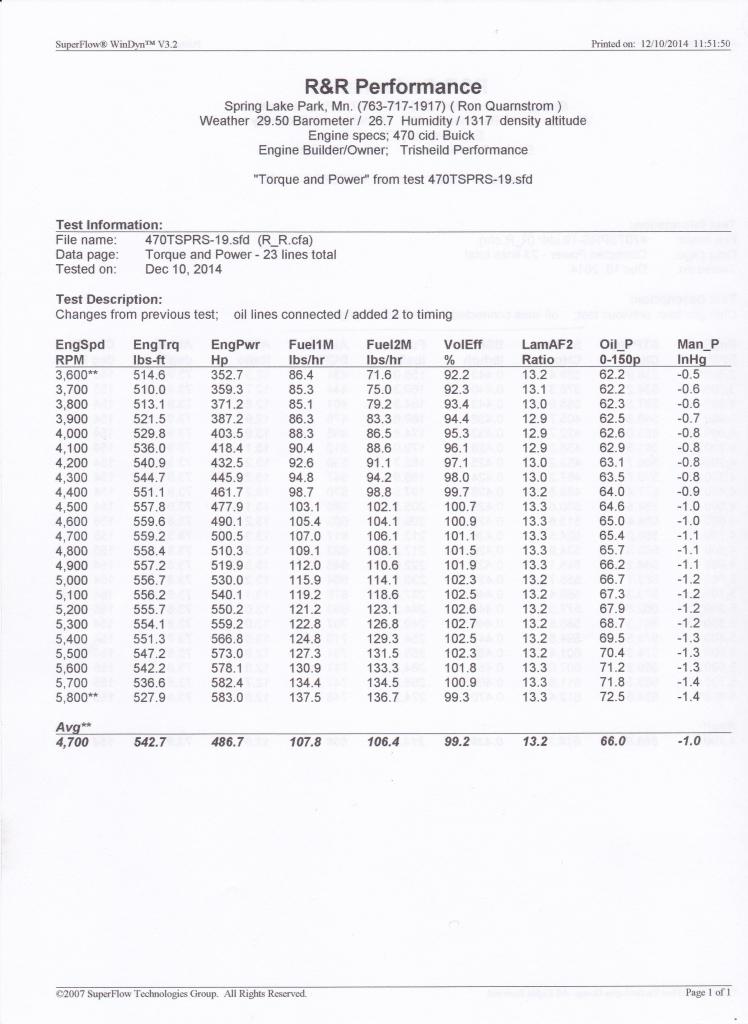
Apparently, reducing the restriction and keeping the galley full from both sides, reduces the strain on the pump, as less pressure is required now. I would be interested in comments from those of you with more of a technical background in fluid dynamics.
In any event, I have had a few folks ask me about it, so I sat down tonight to show it in greater detail.
The only tricky thing is you have to tap the rear of the galley considerably deeper, to fit the steel 90* fitting in the bellhousing. l highly recommend the use of steel fittings and braided stainless lines and fittings, anytime you put anything inside the bellhousing.
It would be a drag to have to take a motor out to fix a leaky line.
The total running time, from engine start, pull to WOT, and then the test, is typically 20-25 seconds.
But the difference as you see, is consistent thru out the pull, more or less.
Look at any one of the dyno videos on my website, and you can calculate how long it runs.
Volume to each side would be difficult to measure, but I would suspect that only dynamic testing would be useable information, free flow tests out of the engine would only be limited by pump speed and orifice size.
Rooting around looking for some EGT stuff or Randal, I came across this example.. Jim's motor (Machinefarmer)..
Didn't start out this way, but ended up being a virtual duplicate to Larry's motor, save for some head porting.. and it does not have the equalization line.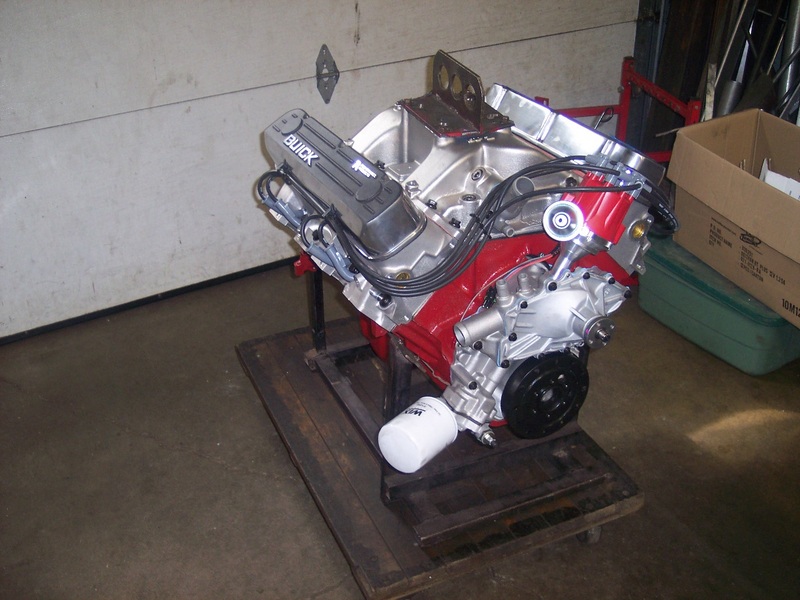
We did upgrade the balancer to an SFI unit, and the oil pan to an TA fabricated pan, before it went in the car.
Here is the data, the by-pass line was not in the original buildup, and I did not add it, as I knew it was optional, and did not want to be seen as "running the price up"... this motor is the only one, of 70-odd builds in 15 years, that changed hands during the process. I guess I have been lucky that way.
Here is the sheet, which I have the digital copy of.. and the appropriate datapoints.
From Left to right... Corrected Torque, Corrected Power, BSFC, Fuel, Air, oil temp, oil pressure, coolant temp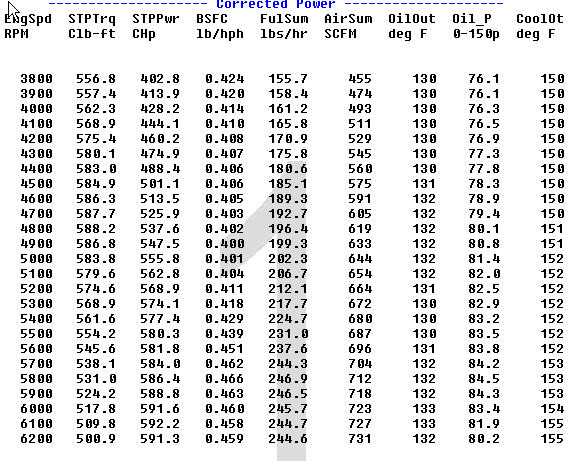
This would be representative how how I would tune a motor like this.. notice the oil pressure is up in the 80's, without the line in it. It will drop into the 70's with 160* oil, but a drag race motor would only see that if he were going rounds at the end of the race. SO I tune the oil pressure for that possibility.
This sheet is also representative of all the ones you see from me.. we do not get the oil to 180* and cool the water to 120.. to make more power.. that is not the point of testing, as far as I am concern. I like to test a steel rod motor, with the oil between 120-140*as measured at the fiter skin. That is typically within 10* of the oil temp in the pan.
We don't have a volume issue with the TA pump housing and the 350 type pump cover. We are all working with the same iron blocks, modified similarly, and we have no problem filling the passages and creating pressure.
Enough volume available for anything that does not need a dry sump, IMHO.. In fact, the only Buick 455 based engines I ever saw that had volume issues were the early big solid roller motors, that would expose the lifter galley when the lifter was up on the cam.. this was before we had fully shrouded solid roller lifters. Those motors had to have more volume, Sweesy's was like that, we had a hard time making 50 psi in that motor, when it was bleeding oil like that, even with a new TA cover. But that's not even an issue anymore, I built one in '13 that had a big solid roller in it, stock oil pump, and the fully shrouded lifters.. no issues.
The Tomahawk blocks get away with much less pressure, and now that I hopefully have the program worked on on them, I expect to see a nice oil curve in the next one..
I did run a similar setup on the first Tomahawk 555, just TA's version.. wish I would have just went internal oiling on that one. The scavenger type systems are bulky, big lines that are difficult to deal with in the vehicle..
They certainly work, I just question whether they are required.
The Supercharged 555 that will go together next month, will have the stock oil pump on it.. at hopefully well over 1000 HP..
So I guess that is what I think of them..
3-2-2015
Hi Guys..
Sorry, that's my slang for the new replacement oil pump covers.. I call them the 350 cover..
This one..
http://www.taperformance.com/proddet...?prod=TA_1512A
they take less work to get good flow out of, vs the oe 455 style cover, which are getting scarce anyway..
JW
3-7-2015
With the snag it grab, it shows up like this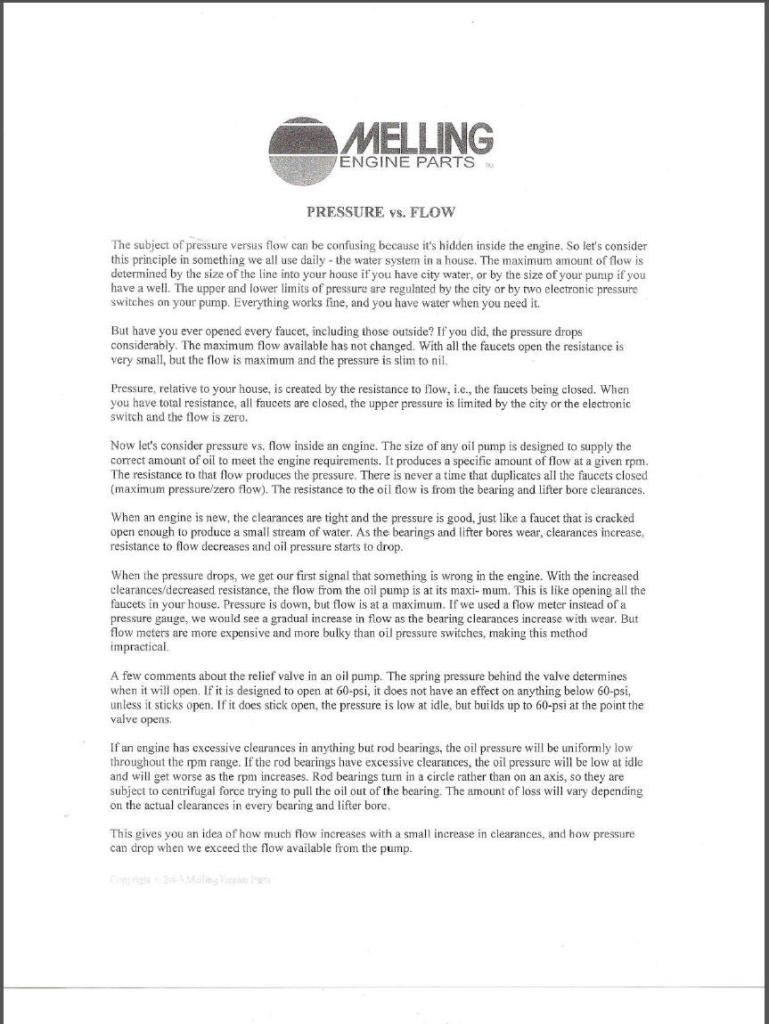
3-29-2015
ya Joe, your looking at it..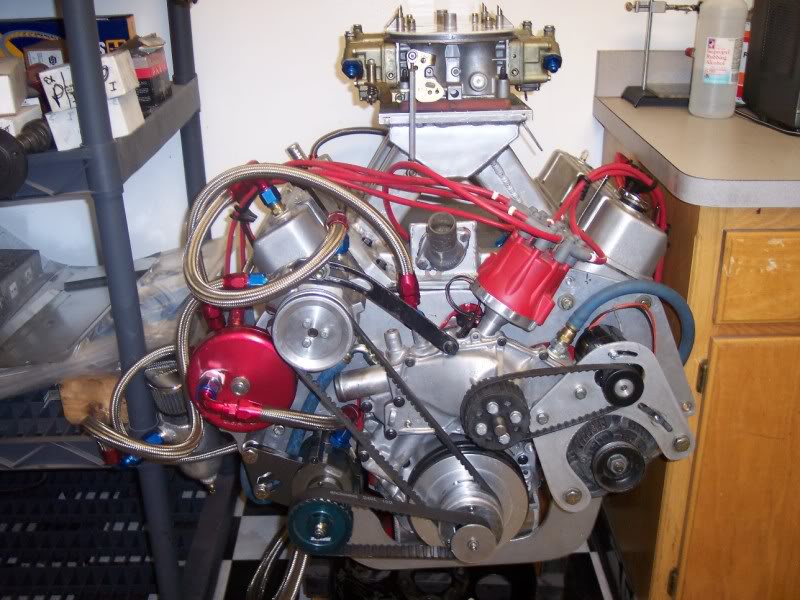
IN short-
External oil pump, fed directly from the sump
To- oberg oil filter
Block modifed as follows- center 3 mains are drilled all the way up into the lifter galley- an oil manifold is then constructed, that pushes past the factory main galleys, but just short of the factory camshaft feeds. This manifold is in effect a priority oil feed to the mains, by-passing lifter bleed off in the passenger main galley.
This had to be done in high lift roller cam engines built before TA came out with fully shrouded roller lifters.. the roller would expose the bottom of the oil galley, causing a massive hemorrhage, if you tried to feed the mains thru the factory galleys.
The passenger side galley is drilled and tapped in the front for a 3/8 pipe plug, beyond the intersection of the factory feed hole/front main galleys- a .060 hole is then drilled in that plug to feed the lifters. The driver side galley feeds around the rear of the TA front cam bearing, as normal.
The rear of the passenger side galley is drilled for a 3/8 pipe plug, which is again installed beyond the intersection of the rear main/factory galley passages. A -6 line is run to the rear to feed just the rear main, the plug also has a .060 hole it in, to feed the lifters.. I know Dave Mongeon used just one hole in his setup for the lifters.
oil is fed from the Oberg oil filter to:
a -10 line to the manifold under the intake from the front, you can see it in the picture. This line fed the 3 center mains.
a -8 feed the factory pressure hole from the Oberg- this feeds the front cam bearing- driver side galley, and front main.
a -6 feed the rear of the passenger side galley, and the rear cam bearing/main.
I built this motor in 2002, and refined it thru the 2007 season. AT 870 HP/765 Torque, it was very durable, and was in use every season thru 2 owners, up till this last year, when it was retired in favor of of a Tomahawk.
Your surprised that I build this, aren't you Gary.. after having your head filled with nonsense like "Weise just builds cookie cutter street motors"- ya, I have heard that one too.
The purpose of this thread is not so solve problems that don't exist. It's to discuss an easy mod to equalize the oil flow/pressure in the passenger side galley, front to rear.
Scavenger type oil pump kits were developed in the time period that the engine above was built, to attempt to feed enough oil to the stock mains to keep the pressure up, with the mains bleeding out the bottom from the roller lifters in use at the time.
Does a scavenger oil pump reduce the number of 90* turns.. sure it does.. but you know what it also is...?
A huge Pain in the ASS.
And simply not required for our motors anymore, unless you refuse to use the correct block to build a high HP Buick race motor.
Guys using the external oil pumps/dry sumps on the Tomahawks are doing it because they already owned the equipment, so might as well use it.
There is a forced induction 555 on the stand now, that will make well over 1000 HP, and will in fact use a 7/8 internal pickup, and that "inadequate" factory oil pump, with all those nasty 90* turns..
If it doesn't work, and I have to go to a scavenger type setup, I will be the first to tell you all.. I did that setup on the first Tomahawk I built in 2011, and I really think it was not required. Good thing I had it, because that motor had a pressurized feed directly to the top end, due to the lifters having on extra hole in them. Now that we located and eliminated that problem, I have every confidence that all this external oiling junk will no longer be required, unless you want the safety factor of running a dry sump engine.
Stay tuned..

